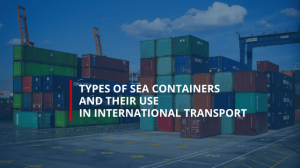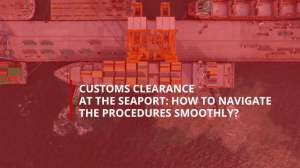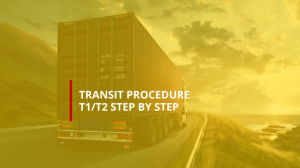

03/03/2025
PROCEDURE 42 FOR IMPORTS INTO THE EUROPEAN UNION – PRINCIPLES, REQUIREMENTS AND BENEFITS
PROCEDURE 42 FOR IMPORTS INTO THE EUROPEAN UNION – PRINCIPLES, REQUIREMENTS AND BENEFITS
What is Procedure 42?
Procedure 42 is a simplified customs procedure used in the importation of goods into the European Union. It allows for VAT exemption in the country where the goods are first introduced, provided they are intended for further intra-community supply. In practice, this means that an importer bringing goods into Poland, for example, but ultimately selling them to another EU country, can defer VAT payment until it is settled in the country of destination.
How does it work in practice?
Procedure 42 is primarily applied when goods are imported into one EU country (e.g., Poland) but are destined for another EU member state. In practice, it works as follows:
– The goods enter Poland as the first EU country;
– VAT exemption is applied during customs clearance;
– The goods are transported to another EU country;
– The recipient in the destination country accounts for VAT in their own country.
What requirements must an entrepreneur meet?
To take advantage of Procedure 42, the importer must meet specific conditions:
– Possess an EORI number;
– Possess a VAT-EU number;
– Provide proof that the goods will be transported to another EU country – an intra-community supply invoice is required, as the customs agency includes the final recipient’s VAT number in the customs declaration;
– Indicate the buyer in another EU country, who is also a VAT taxpayer;
– Possess a Polish VAT number and a bank account in Poland for tax settlements (if operating in Poland as an importer) or use a representative, such as an accounting office.
Benefits of Procedure 42
1. No need to pay VAT in the country of import, improving financial liquidity;
2. Legal introduction of goods into the EU without additional costs;
3. Simplified accounting – no need for subsequent VAT refunds;
4. Enhanced competitiveness – ability to offer more attractive trade terms.
Process overview – import under Procedure 42
a) The entrepreneur declares the goods under Procedure 42 during customs clearance in Poland;
b) They declare that the goods will be transported to another EU country;
c) VAT is not paid during customs clearance – the tax is settled by the recipient in the destination country;
d) The goods are shipped to the buyer in another EU country;
e) The recipient settles VAT in their country according to intra-community supply regulations.
Importing goods under Procedure 42 vs. standard import (Procedure 40)
To understand the tax optimization potential of Procedure 42, it is useful to compare it with traditional import. In a standard import scenario, when customs clearance takes place in Poland, the importer must pay customs duties and VAT. The taxable amount is the customs value plus any due duties, and VAT must be paid within 10 days of the customs debt arising.
In contrast, Procedure 42 allows for VAT exemption in the country of import, significantly improving the importer’s cash flow. VAT is settled by the recipient in the destination country, meaning the importer does not need to finance the tax upfront at the time of import.
Practical example
Company X imports computer equipment from China to Poland and then sells it to Germany. Thanks to Procedure 42, the company does not have to pay VAT in Poland, improving its financial liquidity. The final VAT is accounted for by the recipient in Germany under intra-community supply rules.
Transaction security
To use Procedure 42, the entrepreneur must meet specific requirements, such as having an EORI number, a VAT-EU number, and proof that the goods will be transported to another EU country. This requires proper documentation, such as an intra-community supply invoice or transport documents.
Regulatory changes and updates
The regulations regarding Procedure 42 may change. Therefore, entrepreneurs should regularly monitor legal updates and consult tax advisors to ensure compliance with current rules.
Potential risks
Incorrect application of Procedure 42 may result in legal consequences, such as financial penalties or the obligation to pay overdue VAT. Therefore, it is crucial to strictly adhere to procedural requirements and maintain appropriate documentation confirming the intended intra-community supply.
Summary
Procedure 42 is a beneficial tool for businesses engaged in international trade, particularly those importing goods into Poland and then transporting them to other EU countries. By using this procedure, companies can optimize VAT-related costs and improve cash flow by avoiding immediate VAT payments at customs clearance.
To fully benefit from Procedure 42, businesses must strictly comply with documentation requirements and register in relevant systems (e.g., VAT-EU, EORI). It is also advisable to use tax representatives who can assist with customs and tax formalities in Poland and destination countries.
In conclusion, Procedure 42 is an excellent tool for enhancing efficiency and competitiveness, but it requires diligence and regulatory compliance. Proper preparation and continuous monitoring of regulatory changes are essential to fully leverage its advantages.
Legal sources
For information on Procedure 42 in the context of importing goods into Poland, refer to the following sources:
– The Act of March 11, 2004, on Goods and Services Tax (VAT Act) (PL)
– The Regulation of the Minister of Finance of December 19, 2014, on detailed rules for applying customs procedures (PL)
– The customs declaration instruction manual (Part VI, Section 6.18) – available on PUESC
– Commission Regulation (EU) No 952/2013 of October 9, 2013, establishing the Union Customs Code
– The Act of March 19, 2004 – Customs Law (PL)
USE THE BEST CUSTOMS SERVICE IN POLAND TODAY
CONTACT OUR SALES DEPARTMENT AND FIND OUT HOW WE CAN SOLVE YOUR CASE





